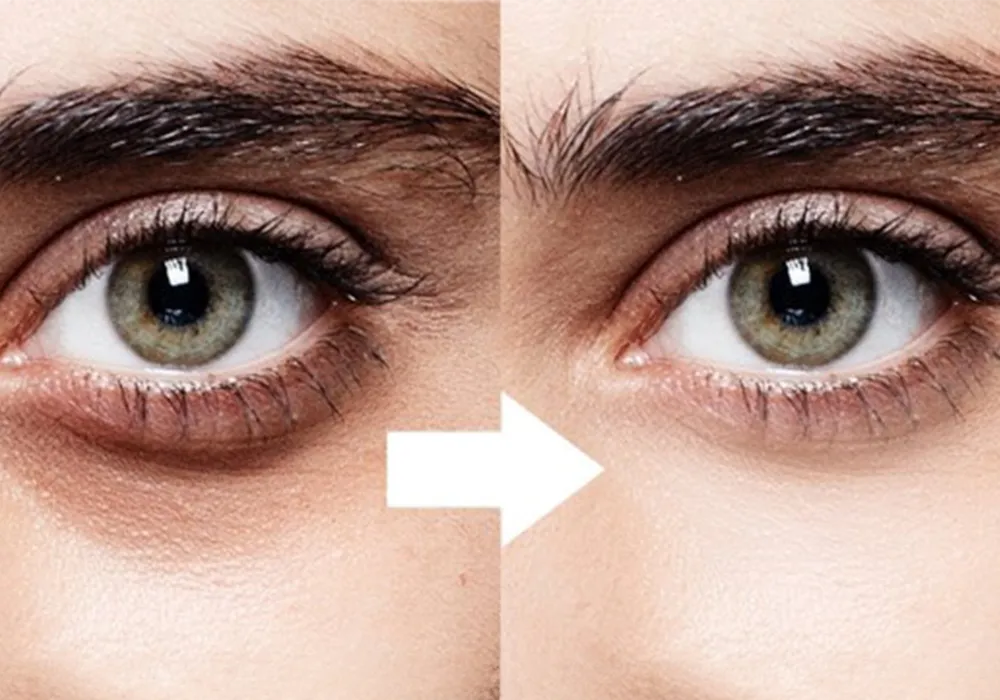Under Eye Bumps: Causes, Treatments & When To See A Doctor
Have you ever caught a glimpse of yourself in the mirror and noticed tiny, often white or bluish, bumps in the delicate skin beneath your eyes? These seemingly innocuous blemishes could be a sign of several underlying eye conditions that warrant attention and understanding.
The area under the eyes is a delicate tapestry of skin, and the appearance of bumps can be a source of both cosmetic concern and potential medical curiosity. This region is particularly susceptible to a range of dermatological conditions due to the thinness of the skin and the underlying network of blood vessels and structures. Whether these bumps are a cause for concern, what treatment options are available, and when a visit to a healthcare professional becomes necessary is what we will explore.
| Type of Bump | Description | Possible Causes | Treatment Options |
|---|---|---|---|
| Milia | Tiny, white or yellowish cysts. Resemble small pimples or blisters. | Trapped keratin beneath the skin's surface. Often triggered by skin trauma, sun damage, or the use of heavy cosmetic products. | Gentle exfoliation, topical retinoids, professional extraction by a dermatologist, or laser treatment. |
| Syringomas | Small, flesh-colored or yellowish bumps, usually appearing in clusters. | Benign tumors of the sweat ducts. Often appear on the lower eyelids. | Surgical excision, electrocautery, laser ablation, or cryotherapy. |
| Xanthelasma | Soft, yellowish plaques that form on the eyelids. | Cholesterol deposits. Associated with high cholesterol levels in some cases. | Surgical excision, laser treatment, cryotherapy, or chemical peels. Addressing underlying cholesterol issues. |
| Styes | Red, painful bumps that develop on the eyelid, often near the eyelashes. | Bacterial infection of an oil gland in the eyelid. | Warm compresses, topical or oral antibiotics (in severe cases), and avoidance of eye makeup while the stye is present. |
| Pimples/Acne | Inflamed, pus-filled bumps that can occur anywhere on the face. | Blockage of hair follicles with oil and dead skin cells, leading to bacterial infection. | Topical or oral acne treatments (e.g., benzoyl peroxide, salicylic acid, retinoids), or professional extraction. |
It's essential to understand the distinction between these bumps to ensure appropriate management.
Under-eye dimples, often mistaken for bumps, present a different cosmetic concern. These are commonly referred to as tear troughs, a common aesthetic concern. They develop as we age, and the appearance is often linked to volume loss, changes in ligament structure, and accentuated hills and valleys in the area. Several factors, including the natural aging process, genetics, and lifestyle choices, can contribute to their formation. While not directly a "bump," the appearance of tear troughs can significantly impact a person's perceived appearance.
Dimples are often considered an attractive trait, and as such, many people desire them. Dimpleplasty is a type of plastic surgery performed to create chin or cheek dimples. This procedure is relatively short and typically requires a day's care, performed under local anesthesia or intravenous sedation. The creation of dimples involves manipulating the underlying muscle and skin to produce the desired indentation. However, it's vital to understand that any surgical procedure carries associated risks, and a qualified plastic surgeon should perform dimpleplasty.
The malar area, which is located below the eye socket bone, can experience malar edema, which is characterized by puffy pouches that sit closer to the cheek than directly under the eyes. Also, visible oil glands can appear around the eye due to thinner skin. These are normal and while the may present some cosmetic concerns, are not generally cause for alarm.
Another common concern is the appearance of dark circles under the eyes, often exacerbated by sleep deprivation or other lifestyle factors. While not "bumps" per se, dark circles contribute to an overall appearance of fatigue and can be a primary focus for cosmetic concerns. Dark circles can be caused by volume loss, underlying blood vessels becoming more visible, and even pigmentation changes. A myriad of treatment options can be available, depending on the cause.
As a professional plastic surgeon specializing in facial procedures, it's imperative to provide a thorough understanding of under-eye dimples, including their causes, treatment options, and associated risks. Options for addressing tear troughs may include hyaluronic acid fillers, which help restore lost volume and smooth out the depression; however, fillers are not without risk, and it is important to consider them carefully.
Problems can arise from fillers under the eyes, and it's important to research and understand the procedure before making a choice. The visibility of dimples may change over time, depending on how much fullness youve got on your cheeks at the time. There can be bruising and dimples under the eyes are one of the most common and annoying problems among people. For this reason, plastic and cosmetic surgeons, dermatologists, and ophthalmologists have many clients.
While not all "bumps" under the eyes are cause for alarm, understanding the potential causes, associated risks, and treatment options is essential. If you notice new bumps or changes in your skin, consult a dermatologist or healthcare provider to determine the specific type of lesion and the most appropriate treatment plan. Early diagnosis and intervention can often prevent complications and improve cosmetic outcomes.


